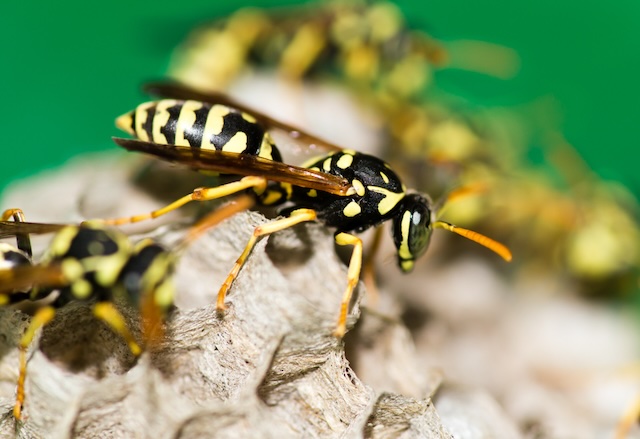Wasps are a diverse group of insects belonging to the order Hymenoptera, which also includes bees and ants. They come in various species, and while some are solitary, others form colonies. Wasps play important roles in ecosystems as predators and pollinators. However, they are often associated with their ability to sting, which can cause discomfort and, in some cases, allergic reactions. Here’s some further information to help you understand these stinging insects:
Types of Wasps: There are two primary categories of wasps: solitary wasps and social wasps. Solitary wasps live and hunt alone, while social wasps, such as yellowjackets and hornets, live in colonies with a hierarchical structure.
Physical Characteristics: Wasps have slender bodies with a distinct waist between the thorax and abdomen. They come in various colors, including yellow, black, and metallic blue. However, coloration can vary depending on the species.
Life Cycle: The life cycle of social wasps typically begins with a mated queen establishing a new colony in the spring. The queen builds a nest and lays eggs that develop into larvae. Worker wasps emerge from these larvae and take over the tasks of expanding the nest, foraging for food, and protecting the colony. Towards the end of the summer, reproductive males and new queens are produced. These queens mate, and the fertilized queens overwinter, starting new colonies the following year.
Nest Construction: Social wasps build nests using various materials such as wood fibers, saliva, and plant matter. Nests can be located underground, in trees, shrubs, or man-made structures like buildings and attics. Each species has its preferred nesting location and construction style.
Diet and Behavior: Wasps are predators and feed on a variety of insects, including flies, caterpillars, spiders, and other small arthropods. They also scavenge for sugary substances like nectar, fruits, and human food. Social wasps are known for their defensive behavior when their nest is threatened. They can release pheromones to alert other colony members, and multiple wasps may sting in defense.
Sting and Venom: Wasps have stingers, which they use to inject venom when they sting. The venom contains various compounds that can cause pain, inflammation, and in some cases, allergic reactions. Unlike bees, most wasps can sting repeatedly since their stingers are not barbed and remain intact.
Ecological Importance: Wasps are valuable in ecosystems. They help control populations of insects considered pests, which benefits agriculture and gardens. Additionally, some wasps are important pollinators, aiding in the fertilization of plants.
Dealing with Wasps: If you encounter wasps and their nests in close proximity to human activity, it’s important to exercise caution. Avoid sudden movements, as they can trigger defensive behavior. If a nest poses a threat, it’s recommended to contact professional pest control services for safe removal or management.
Understanding the behavior and ecology of wasps can help us coexist with these insects and appreciate their role in the natural world while taking necessary precautions to minimize potential conflicts.
